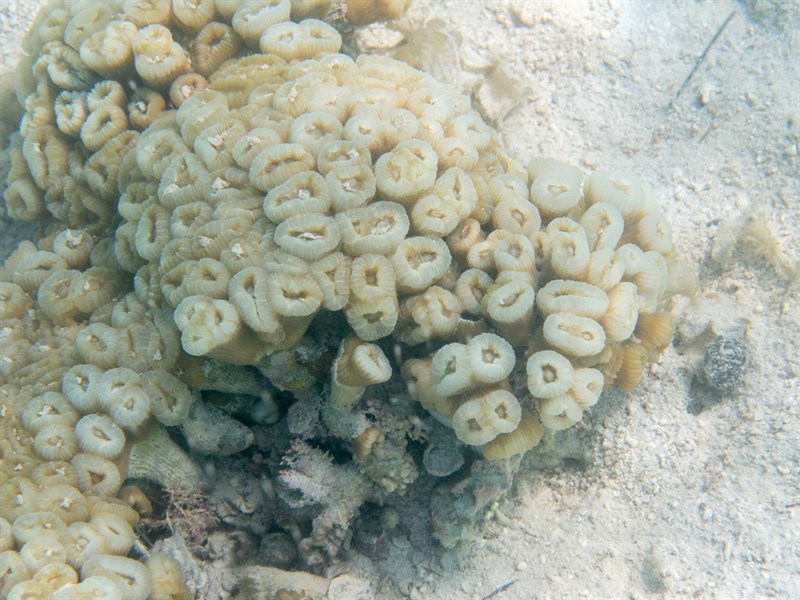The Large Polyp Coral – Astraeosmilia connata is a species of colonial coral, known for its characteristic large polyps and distinctive appearance. These corals play a crucial role in the health and biodiversity of the marine environments they inhabit.
Description & Characteristics
The Astraeosmilia connata is a robust coral species that can form large colonies with a variety of shapes and sizes. Their colonies often display a massive, mound-like or branching structure, showcasing the interconnected polyps that comprise them. The individual polyps of the Astraeosmilia connata are relatively large compared to other coral species, hence its common name.
Habitat and Occurrence
The Astraeosmilia connata thrives in the Subtidal, sublittoral, infralittoral, deep zone of the oceans from the lower limit of the intertidal zone (intertidal) to the shelf edge at about 200 m water depth. neritic., making it a prevalent presence in these aquatic ecosystems. This species is well-adapted to the varied conditions found in these marine zones, including changing light levels, water currents, and temperatures.
Taxonomy
The species Astraeosmilia connata belongs to the Class: Hexacorallia, Order: Scleractinia, and Family: Merulinidae. This classification places the Astraeosmilia connata within a broad group of corals characterized by their hexagonal symmetry and calcium carbonate skeletons.
Feeding
The Astraeosmilia connata is a heterotrophic organism, relying on a combination of sources for its sustenance. The polyps of this coral species harbor symbiotic algae known as Zooxanthellae within their tissues. These algae utilize sunlight through photosynthesis, producing energy that is then shared with the coral host. Additionally, the Astraeosmilia connata feeds on various forms of plankton, including phytoplankton, zooplankton, and detritus that are captured by their polyps.

Image References